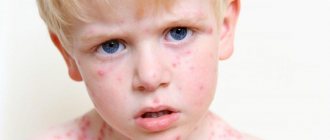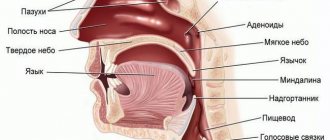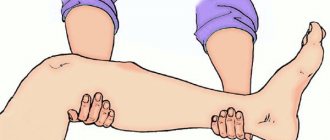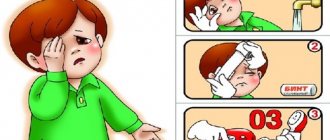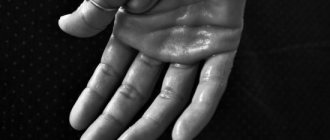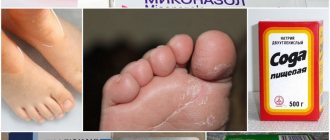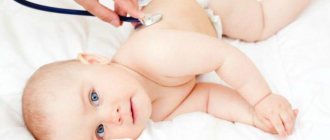Quite often, parents have to treat their child’s burns. At the same time, a lot depends on how correct and correct the treatment will be, because not all creams that are approved in childhood are suitable for such traumatic situations. We will tell you in this article what medications you should have in your first aid kit in case of a child’s burn, and how to use them.
List and description of groups of ointments used for burns
Ointments used to eliminate the consequences of damage to the skin by a burn are medically divided into groups according to the therapeutic effect they provide:
- painkillers (Radevit, Sulfargin). These ointments contain anesthetic components that reduce the susceptibility of nerve endings, thereby reducing the pain symptom;
- disinfectants (Bepanten, Dexpanthenol, Furacilin). Their use is required when the integrity of the skin is damaged. The composition of the ointments protects the layers of the epidermis from infection. The ointments contain antiviral, antibacterial or antifungal components;
- healing (Solcoseryl, Lifuzol, Olazol). The products are used during the recovery period of the skin. The components included in the composition accelerate the process of tissue regeneration and the healing process;
- hormonal (Elocom, Ftorokort, Afloderm). The hormones included in the ointments prevent the development of the inflammatory process and reduce pain. They are highly effective, but are prohibited for long-term use due to the development of addiction to the composition;
- anti-allergenic (Fenistil, Ketocin, Balimin). Ointments help eliminate swelling, itching and inflammation.
Before purchasing an ointment for burns, you should consider the following nuances of choice:
- any burn is accompanied by pain, so it is recommended to give preference to ointments with a thinner consistency so as not to cause pain when applying the product;
- versatility of the composition. The ointment can simultaneously have several properties (pain relief, accelerate the regeneration process and protect against infection);
- the presence of a minimum list of contraindications, including age-related ones;
- in complex treatment it is necessary to take into account the interaction of drugs.
When choosing an ointment, it is important to know what caused the burn. Remedies for healing the epidermis from thermal burns may not be suitable for chemical damage to the skin. In severe forms, self-treatment is not recommended. Only a dermatologist or therapist/pediatrician can select medications.
What to do before applying the ointment
Ointment for burns (healing, analgesic or disinfecting) has the desired effectiveness if you follow the rules for preparing the damaged area:
- reassure the victim (especially if a child was burned);
- remove tissue and jewelry that comes into contact with the wound. If this procedure is possible;
- in case of severe pain, give the victim oral painkillers;
- the burn site (if possible) should be above the level of the heart. This will reduce blood flow and slow down the development of swelling and inflammatory response;
- disinfect hands using antibacterial soap or antiseptics;
- Gently rinse the area where the ointment is applied with cool (preferably boiled) water. If necessary, apply a thick cloth compress soaked in cold water. Leave for 15-20 minutes;
A burn, before applying a healing ointment for burns, must be treated with an antiseptic - degrease the damaged area;
- treat the area with an antiseptic;
- apply the selected ointment (use a bandage if necessary).
If there is a possibility of developing an allergic reaction to the composition, before applying the ointment to the burn site, a sensitivity test is required. If the burn is caused by a chemical composition, then it is recommended to go to the nearest hospital. Since it is necessary to choose the right medications that do not react with aggressive agents.
The choice of remedy depending on the severity of the injury
Skin burns vary in severity from slight redness to the appearance of blisters with liquid contents. In severe cases, the process is accompanied by rapid death of the upper layer of the epidermis with the formation of open, deep wounds. Before using the ointment, it is necessary to determine the severity of the skin lesion.
| Burn severity | a brief description of |
| 1 | The damaged area of the skin becomes red in color, and slight swelling is possible. There are no blisters or bubbles with liquid contents. The pain symptom goes away within 1-6 hours. Complete restoration of the burn site is observed after 3-5 days. Treatment is carried out at home. Bepanthenol and Vishnevsky ointments are recommended. |
| 2 | The site of damage has a red tint, and blisters and bubbles containing fluid also quickly appear. The use of a cold compress followed by the use of Levomekol or Bepanten is required. If the wound is small, treatment can be done at home. |
| 3 | The burn area may have a red-blue tint as skin cells die. There are open wounds. An urgent visit to the nearest hospital is required. It is recommended to take internal pain medications to relieve pain. Further treatment is selected by a specialist. |
| 4 | A burn damages not only skin cells, but also muscle tissue. Emergency assistance from specialists is required. |
In case of burns, it is important to determine the general condition of the victim and the area affected. With extensive damage to the skin, even at stage 2, urgent assistance from specialists is required. It is also necessary to know the source of the skin lesion (hot object, chemical composition or exposure to electric current) so that the specialist can correctly select further treatment.
Treatment
When treating a burn with boiling water, antibiotics are not necessary. They are needed only when there are blisters on the skin that burst easily, because this increases the likelihood of infection of the wound by bacteria and fungi. Opening bubbles and blisters yourself is strictly prohibited.
With such a burn (from 2nd degree), it is important that the doctor prescribes treatment. Usually hospitalization is not required, but if there is extensive damage in an infant or child under 2-3 years old, it is advisable to undergo treatment in a hospital. Treatment of thermal burns is aimed at relieving pain, eliminating possible infection, as well as speedy tissue regeneration . At home, parents will be required to bandage and treat the affected area.
If the burn is small and shallow, you can do without a bandage (in medicine this method is called open).
If there are blisters, it is better to use a dressing for several days. Each treatment must include:
- Treating the burn with antiseptics. To do this, you do not need to use alcohol-containing preparations. The best solution is furatsilin or hydrogen peroxide. When processing, do not rub the product into the sore spot, this will cause a lot of unpleasant sensations. You can use a cotton swab.
- The main drug. If there are no blisters, then they use means for rapid tissue regeneration. Healing ointments and creams can be applied to a soft, clean medical napkin and applied to the affected area. The choice of such ointments is quite large - “Panthenol” (ointment and spray), “Olazol” (aerosol), “Radevit” , zinc ointment, ointment or solution “Eplan” . If there are blisters, if some of them have already burst and turned into ulcers and wounds, it is better to choose a product with antibiotics as the main drug - Levomekol ointment, Baneocin (ointment and powder at the same time - first the ointment, and then the powder on top).
- Apply a clean bandage. To do this, you need to use only sterile dressing material from the pharmacy. The bandage should not be too tight so that the blood supply is not disrupted.
Contraindications to the use of ointments
Ointment for burns (healing, hormonal or disinfectant) is a medicinal product and has contraindications that should be excluded before use.
The main prohibitions specific to ointments (depending on the composition, the list may increase or decrease):
- intolerance or allergic reaction to the components of the product;
- ointments containing antibiotics can only be used under the supervision of a specialist in the presence of liver or kidney pathologies;
- hormonal drugs are prohibited for fungal infections;
- potent ointments are prohibited from use in childhood, pregnancy and lactation;
- if there are infectious rashes on the skin (pustules, eczema, psoriasis), ointments are selected by a dermatologist. Infection may occur in open wounds;
- Do not use ointments on your own for burns of 3rd and 4th degree of severity;
- In case of damage to the mucous membranes, medications are prescribed by a specialist.
Ointments prepared according to folk recipes can also cause a negative reaction. Especially if the recipe is not followed or used incorrectly.
Antimicrobial and anti-inflammatory agents
If there is damage to the integrity of the skin, infection may enter open wounds with further development of suppuration and spread of the pathogen throughout the body. To prevent this process, it is necessary to use antiseptic and anti-inflammatory ointments to treat the burn site.
Levomekol
The active ingredients of the ointment are dioxomethyltetrahydropyrimidine (accelerates the process of cell regeneration) and chloramphenicol (an antibiotic). The product is able to draw pus from wounds and eliminate the inflammation process. The ointment is prohibited for use in case of intolerance to the components or the presence of chronic skin diseases (eczema, psoriasis, fungus).
The composition can be used in the treatment of children over 3 years of age, with any severity of burn. Before applying the ointment, you need to wash the skin. Next, the product is applied to a bandage and attached to the affected area using a bandage. The bandage with ointment must be changed at least 5 times a day. The duration of treatment is 5-7 days, but not more than 10 days.
Components of the composition can cause itching and burning, increase swelling, and also provoke allergic rashes. During pregnancy and breastfeeding, use is permitted under the supervision of a specialist. Sold without a prescription.
Tetracycline
The main substance of the ointment is the antibiotic tetracycline hydrochloride. With prolonged use, the component accumulates in the liver, lungs and kidneys, and is also deposited in bone tissue. As a result, the use of the product is not recommended for pathologies in these organs.
Tetracycline is prescribed for treatment in patients over 8 years of age. The ointment must be applied to the burn site 1-2 times a day, and if necessary, use a bandage. Course duration is 7-15 days. Therapy may be accompanied by skin rashes, swelling of the treated area and itching.
The product is prohibited for use during pregnancy and lactation, as it disrupts the development and formation of organs. Sold with a prescription.
Lincomycin
The active ingredient of the ointment is the antibiotic lincomycin. The use of the product is prohibited in case of intolerance to the components and the presence of severe liver and kidney pathologies. Also, the product is not used for treatment in children under 6 years of age.
For burns, lincomycin must be applied to the affected area 2-3 times a day (in a thin layer) for 7-14 days. Therapy may be accompanied by increased redness of the treated area of the epidermis, with the appearance of itching and burning. Long-term use can provoke the development of a fungal infection.
Lincomycin should not be used simultaneously with other antibiotics and anti-inflammatory drugs due to the likelihood of increased side effects of both drugs. Also, use is prohibited during pregnancy and breastfeeding. Sold with a prescription.
Baneocin
The active ingredients of the ointment are the antibiotics neomycin sulfate and zinc bacitracin. This composition provides a pronounced antibacterial effect. The drug is recommended for use in treatment under the supervision of a specialist for severe pathologies of the kidneys and cardiovascular system.
Baneocin is applied under a bandage 2-3 times a day. The duration of the course is determined individually according to the general condition of the patient. The product can cause disruption of the nervous system, allergic rash and itching. The ointment should not be applied to large areas of the skin due to the likelihood of increased side effects.
Baneocin is allowed to be used in childhood, pregnancy and lactation only under the supervision of a specialist. Sold without a prescription.
Argosulfan
The active ingredient of the ointment is sulfathiazole silver salt, which has an antimicrobial and analgesic effect and accelerates the process of skin restoration. The product should not be applied to large areas of the skin or if the patient’s condition is serious. Use with caution for liver pathologies and in childhood.
The composition is applied to the skin treated with boric acid 2-3 times a day. You can use a bandage over it. Long-term use is allowed for up to 60 days (monitoring of kidney and liver activity is required). Treatment may be accompanied by an allergic reaction (itching, swelling, rash).
Argosulfan is not recommended for use during pregnancy; use is prohibited during lactation. Sold without a prescription.
Keratolytic agents
Keratolytic ointments also have a healing effect. They contain acid (salicylic, benzoic or lactic), which softens dead cells and speeds up the process of separating them from the new skin layer. Additionally, the products have antiseptic and anti-inflammatory properties, which accelerates the process of epidermal restoration in case of burns.
Iruksol
The active components of the ointment are the antibiotic chloramphenicol and clostridiopeptidase (accelerates the process of exfoliation of dead cells). The use of the product allows you to speed up the process of restoring the damaged layer of the epidermis and additionally protects against the penetration of infection into open wounds.
Use is contraindicated in case of intolerance to the components and blood diseases.
Iruksol is applied 2 times a day. The course of treatment is determined individually based on the general condition of the patient. After applying the ointment to the skin, a burning sensation and irritation may occur. The product is not recommended for use in complex treatment, as well as during pregnancy, lactation and up to 12 years. Sold without a prescription.
Fibrolan
The main elements of the ointment are plasmin (provides a keratolytic effect) and deoxyribonuclease (prevents the development of viruses). The product promotes the rapid removal of dead cells and prevents the development of the virus. Fibrolan is prohibited for use if you are intolerant to the components.
The ointment must be applied 3-4 times a day at regular intervals until the skin is completely restored. Symptoms of an allergic reaction (rash, swelling, itching) may appear in the treated area. During pregnancy, breastfeeding and childhood, use is carried out under the supervision of a specialist. Available for free sale.
Protegentin
The active ingredients of the ointment are antibiotics (gentamicin and erythromycin) and enzyme C (softens dead tissue and promotes their rapid exfoliation). Protegentin should not be applied to large areas of the skin due to the likelihood of increased side effects (rash, itching, swelling).
The composition must be applied 1-2 times a day, but not more than 5 g per application. The course of treatment is 5-10 days (determined by the attending physician). The ointment is not used during pregnancy, lactation and up to 12 years of age.
Prevention
All preventive measures fall entirely on the shoulders of parents. It is only in their power to ensure that the risks of burn injury are reduced as much as possible. For this:
- The child should not be allowed to play in rooms where, even theoretically, boiling water or hot water could leak. Such dangerous areas in the house include the kitchen, bathroom, boiler room, and boiler room.
- Do not carry hot tea or soup over a child playing on the floor. Any unexpected thing can happen, an adult can trip, get burned himself and drop the cup from his hands, scalding the child.
- All pots with boiling water or prepared food should be placed on the most remote burners of the kitchen stove, making sure to turn all the handles towards the wall so that the child cannot accidentally reach out and tip the containers with hot liquid onto themselves.
- Pots with hot liquid and a kettle should be placed as far as possible from the edge of the table.
- You cannot carry a child in your arms or hang a child in a kangaroo while preparing food.
- You should not pour hot soup or tea for your child and immediately seat the child at the table. Not all guys can blow on food, but everyone without exception can knock over hot dishes on themselves.
- A caring mother will definitely ask your dad or a visiting plumber to install special plumbing electronic limiters on all hot water taps, which will allow you to regulate the temperature of the water that flows from the tap.
Even if the baby gets to the water unauthorized and turns it on, everything will end without burns.
For more information on providing first aid to a child who is burned by boiling water, see the following video.
medical reviewer, psychosomatics specialist, mother of 4 children
source
Regenerating agents at the stage of granulation and epithelialization
Healing ointment for burns is used to restore metabolic processes and cell regeneration. The use of products is advisable during the recovery stage of the skin. With rapid renewal of the epidermis, the risk of infection and scar formation is reduced.
Methyluracil
The active element of the ointment is methyluracil (normalizes metabolic processes and accelerates cell regeneration). Additionally, the product has analgesic, immunostimulating and anti-inflammatory effects. Methyluracil is contraindicated for use in the presence of tumor formations, blood diseases and intolerance to the components.
The composition must be applied 2 times a day, but not more than 5 g per application. The duration of the course is from 15 to 90 days (depending on the dynamics of treatment). Therapy may be accompanied by an allergic reaction (redness of the skin, itching, burning). It is allowed to use the ointment during pregnancy and lactation. Up to 3 years of age, the product is used under the supervision of a pediatrician.
Solcoseryl
The main substance of the ointment is deproteinized dialysate obtained from the blood of calves. The element normalizes metabolic processes, eliminates pain and improves tissue regeneration. The drug is contraindicated for use in the presence of intolerance to the components of the drug.
The composition is applied to cleansed skin 1-2 times a day, applying a bandage is allowed to speed up the healing process. The ointment is applied until the epidermis is completely restored. After applying Solcoseryl, an allergic reaction may occur, then the use of the product is canceled.
The product combines well in complex treatment. During pregnancy, breastfeeding and childhood, it is used under the supervision of a specialist. Sold without a prescription.
Balsamic liniment according to Vishnevsky
The active elements of the ointment are tar, castor oil and xeroform, which ensure normalization of blood supply and metabolic processes. The product also has a disinfecting, anti-inflammatory and immunomodulatory effect. For severe kidney disease, the ointment is used with caution.
The composition is applied to cleansed skin 2-3 times a day. The use of a bandage is recommended. Treatment continues until the layers of the epidermis are completely restored. The use of the product may be accompanied by itching, burning and redness of the treated area.
During pregnancy, lactation and childhood, use under medical supervision is permitted. Sold without a prescription.
When to see a doctor
Many people prefer to treat burns from boiling water themselves. With the first degree and a small area of injury, this decision is correct. But when blisters and wounds appear, many people suspect that they cannot do without medical care. You should call a doctor if:
- A burn of any degree with a large area of damage was received. The size of the victim's palm can be taken as a metric unit. If the area of injury from boiling water is the size of this palm or larger, it is better to contact a burn center for advice and assistance in treatment.
- Received a III-IV degree burn. Regardless of the area of damage, such injuries should be treated only under the supervision of a physician. When treating deep lesions there is a risk of complications. Only doctors can prevent their occurrence and provide competent assistance.
- A child under one year old was scalded. For young children, injuries from boiling water are much more dangerous than for adults. Therefore, in any case, the child should be examined by a doctor, even if everything is limited to redness of the skin in the area of thermal influence.
In addition to these situations, people go to the emergency room when the wound becomes infected and suppurates. Doctors will help treat the injury, prescribe antiseptics, and, if necessary, prescribe antibiotics. Without these measures, there is a risk of injury from boiling water leading to blood poisoning.
Hormone-based ointments
Healing ointment for burns based on hormones is used only after prescription by a specialist, as they have a large list of side effects. The hormonal composition of the product helps reduce the inflammatory process, relieve swelling and reduce the likelihood of developing an allergic reaction.
Ointments used for burns:
| Product name | Age restrictions | Terms of use | Notes |
| Hydrocortisone | After a year | Apply 3 times a day for 10-14 days. If necessary, the course can be extended to 20 days. | Long-term use of the ointment can cause infection. Contains a minimal amount of hormones. |
| Elokom | After 2 years | The ointment is used once a day for 14-20 days. | Helps quickly eliminate the process of inflammation and swelling. |
| Advantan | After 3 months | The composition must be applied once a day for 7-14 days. If necessary and after consultation with a specialist, it is allowed to extend treatment up to 30 days. | The composition fights the development of swelling and inflammation. Also eliminates pain symptoms. |
| Lokoid | After 6 months | The ointment is used 3 times a day for 7-14 days. | The composition is quickly absorbed, so the use of bandages is not required. |
| Sinaflan | Used in childhood under the supervision of a pediatrician | The product is used 4 times a day for 14 days. | Contains a minimal concentration of hormones. |
Hormonal ointments are not recommended for use during pregnancy and while breastfeeding. Sold only with a prescription.
Treatment of burns in children
The principles of action for burns in children are the same as in adults. The only thing that differs is the dosage and concentration of the drugs. In addition, there is psychological difficulty in providing first aid and further treatment. Because children are emotionally sensitive, they react more strongly to pain, and unsightly blisters can cause them additional stress. Therefore, the actions of parents must be careful and correct. After providing first aid, the injured child should be shown to a doctor who will prescribe the necessary medications. Self-medication, let alone using traditional methods, is not recommended.
Analgesic ointments for children and adults
Anesthetic ointments are used for burns of 1, 2 and 3 degrees of severity. In grade 4, the victim does not feel pain due to damage to the nerve endings. Independent choice of remedies is allowed only for grades 1 and 2.
Ointments used for burns:
| Product name | Age restrictions | Terms of use | Notes |
| Sulfargin | After a year | Apply 3 times every day for 20 days. | Has bactericidal properties. |
| Bepanten | Has no age restrictions | Apply 1-2 times a day. The duration of treatment is selected individually. | The ointment is allowed to be used during pregnancy and lactation. |
| Radevit | Has no age restrictions | Use 1-2 times a day. It is recommended to use bandages. The course of treatment is selected individually. | Helps soften the skin and accelerates the regeneration process. |
If large areas of the skin are damaged by burns or there are blisters with liquid contents, the ointment is selected by a specialist. Independent choice is prohibited.
Consequences
The consequences of a burn with boiling water can be minimal if we are talking about a 1-2 degree injury, a small area. Such burns, even after treatment at home, go away quickly and do not leave scars or scars. Burns above 2nd degree can have quite unpleasant consequences. These include scars on the skin and severe psychological trauma that the baby will receive.
By the way, young children forget about their burns much faster than toddlers over 3 years old. Some children may subsequently even need the qualified help of a good child psychologist.
Third degree burns can sometimes lead to shock and burn disease, but such conditions cannot be treated at home. Parents must provide first aid and be sure to urgently hospitalize the baby in an ambulance. Traces from such burns usually remain, but modern plastic surgery can easily cope with such consequences, preserving the baby’s normal appearance.
Ointments for chemical burns
Before prescribing an ointment after a chemical burn, you need to know the type of reagent that caused the damage to the skin. Chemicals, even after they are removed, remain in the layers of the skin and can react with the composition of the products used, increasing the area and severity of the burn.
Ointments used for chemical burns:
| Product name | Age restrictions | Terms of use | Notes |
| Zinc | No age restrictions | Apply 2-3 times a day. The duration of the course is selected individually. | It has antiviral, anti-inflammatory and wound healing effects. |
| Eplan | In childhood, use under the supervision of a specialist | Apply a bandage with ointment composition daily. For severe burns, replace every 3-4 hours. Duration of treatment is 7-14 days. | Has antibacterial, wound healing and analgesic effects |
| Turmanidze | In childhood, use under the supervision of a specialist | Apply to the skin 1-2 times a day for 2-3 weeks. | Has anti-inflammatory, analgesic and antiseptic effect. Has a herbal composition. |
| Ichthyol | After 12 years | The ointment is used 2-3 times a day. The duration of treatment is determined individually. | It has analgesic, anti-inflammatory and disinfecting properties. |
It is important that not all chemicals can be removed using water. To wash out, you need to choose the right antidote (a drug that weakens the effect of a chemical substance). Ointments are allowed to be used only after the reagent has been completely eliminated.
Healing of the skin after burns can be accelerated using topical products. Consultation with a dermatologist is recommended. Depending on the severity, area of damage to the epidermis and type of burn (thermal or chemical), ointments are selected.
Author: Kotlyachkova Svetlana
Article design: Mila Friedan

